A year in British flowers and foliage: choosing your stems to embrace each season
- fernfloristscarbor
- Jan 12
- 8 min read
FERN's Instagram page welcomes you by stating that I am a florist who is 'using British grown as much as possible'. To be honest, it's not the best opening line and could maybe do with a bit more of a flourish, but I haven't changed it yet because in its simplicity it tells the truth. In my business I will always try and use British flowers wherever I can. When I choose, or a customer requests, a variety to use in a wedding or funeral arrangements or bouquets, my first port of call is: are these grown nearby (soon by me!) at a flower farm? If the answer is no, I will try other farms across the UK that can deliver. If that's a no too, I will use imported flowers. Simple.

British grown, ideally locally grown flowers that are grown in the sunshine with minimal interference from the man-made world are absolutely my favourite flowers to see, touch, smell and work with. They can be unruly, unpredictable and will sometimes refuse to display themselves where you've placed them, but these qualities are the best things about them. The wiggles of stems and random mutated petal colours that sometimes appear just add an extra dimension to arrangements or bouquets, that extra dimension being nature shouting 'look at what I can do!'. British garden greenery is also particularly good at elevating floral designs to look a bit more like nature was the designer. Varieties like euonymus, elaeagnes and weigelia, all of which you might have growing in your garden, work beautifully to surround the colourful florals with snippets of varying shades of green and also rust, burgundy and ochre as autumn arrives.

Don't get me wrong, imported flowers are hugely important to keeping our industry going and absolutely have their time and place to shine. From November to February when the days are dark and cold and the British flowers are still hibernating in seed packets or bulb nets, we can take advantage of the international flower farms as their climates and specialist glasshouses mean we can still get guaranteed floral beauty to bring some joy to all the grey that hangs overhead. And though I relish the wayward stems of British grown, I do have a soft spot for a few imports such as the usually Dutch grown Gerbera: a mainstay of traditional floristry with its thick, straight stem that holds the impeccably neat daisy style head. Gerberas are sturdy yet pretty and there are very few colours that don't appear among their varieties.
My heart truly belongs to the locally grown though; the blooms, and the leaves, that are left to flourish under the (sometimes sparse!) sunshine of our little corner of the world. With that in mind as we begin a new year I thought I'd make a little calendar of the truly seasonal elements I'll be designing with, growing and enjoying across each month of 2025.
JANUARY
Not a month known for floriferous growth but there is one flower that manages to bloom in the frequent frosts of January: the hellebore. Stubborn stalwarts of the British garden, hellebores appear usually in December and remain in flower through some of the Spring. They're known as the 'winter rose' and come in some very tonal wintry colours from minty green to blackberry. Although a little short for bouquets hellebores are stunning in winter arrangements with evergreen foliage and dried elements. My favourite foliage to use in January is brachyglottis (also known as senecio) which has silver-green leaves with white edges and a soft downy coating, making it look a little frost-kissed.

FEBRUARY
In February the first peeps of Spring are starting to show. As the month ends and the sun becomes more of a regular visitor to our days, the vibrant yellow of forsythia shrubs and the common daffodil helps us to dust off the cobwebs from the cold winter. Dwarf irises are also popping up: at about 10-15cm tall they are miniature versions of the elegant spring/summer flower and come in some beautiful blues and purples. Again, they are a bit too short to do a lot with but a few stems of these tiny irises in jam jars can decorate tables at a winter wedding, perfectly offset with some of those vivid yellow daffodils or sprigs of forsythia.
Daffodils Iris reticulata Forsythia (Gardening Express)
MARCH
March is officially the beginning of Spring and brings with it all the joy of the Spring bulbs. All the standard daffodils and scented narcissi burst out of the soil along with the early varities of tulips, sweet little muscari and the heady scent of the hyacinths. I've planted all sorts of Spring bulbs at the Fern Hill Patch and I can't wait to see the flower heads opening as March arrives - I'm particularly excited about some pink narcissi varieties! Along with the bulbs emerging, another sign of spring is the blossom that starts to decorate the tree branches. A branch of cherry blossom, though quite fleeting once cut, is stunning in a large arrangement or cut down to grace a bouquet.


APRIL
Spring is now fully in bloom and the warmth of the sun is bringing everything back to life. New bulbs are revealing themselves every day and all the varieties of narcissus and tulips are really beginning to show off amongst their friends ranunculus and anemones. Ranunculus are something special with all their delicate ruffles, they can be a pain to get going but they're absolutely worth it!
Tulip 'Holland Beauty' (Farmer Gracy), Narcissus 'Bridal Crown' (Anglia Bulbs) and a stunning ranunculus.
MAY
May is one of my favourite months - I like to call it the month of frills. Double tulips and peonies are the stars of the month with their layers and layers of petals. Peonies are undoubtedly the most anticipated flowers of a gardening year. The plants can almost completely disappear over winter until the new shoots and leaves unfurl in the Spring. In May huge audacious blooms appear and demand all attention away from other flowers, but within a month or so they are gone, not to be seen again until next year. True divas of the garden.


JUNE
We can now refer to the season as 'early summer'. In June we begin to be spoilt for choice from all the new buds and flower heads appearing. Bold and structural alliums stand tall alongside delicate cow parsley and orlaya, the bearded iris are baking in the summer sun and of course the roses are stunning us with their heady scent. I cannot resist a garden rose, especially the fluffy rosette varieties and they absolutely have to be floribunda, for what is a rose without that sweet smell? Cottage garden favourites like lupins and foxgloves are also taking their place - I love use these tall stems in large milk churns to welcome guests to a summer wedding or party. Summer greenery has now returned to the scene and branches of beech alongside tall stems of mint, rosemary and lavender compliment all the other soft colours and scents of June bouquets.
A floribunda rose Orlaya Allium (Longfield Gardens)
Foxgloves Lupins Lavender
JULY
In July it's more of a case of what flowers aren't available as that is a much shorter list! A couple of favourites based on shape and colour include the rare blue of a cornflower, soft curls and gorgeous scents of sweet peas, zesty lime of bupleurum and alchemila mollis and the dramatic umbels of ammi majus. There is not much that can beat the sight of a garden or flower patch on a sunny July morning, with the dots and swirls of multiple pigments painted against the truest blue of a clear sky.
A cloud of sweet peas, Alchemila mollis (Sarah Raven) and Ammi majus (Chiltern Seeds)
AUGUST
The king of August is undoubtedly the sunflower. The height of summer and the sunniest of florals go hand in hand, whether it's the classic yellow varieties or the sunset reds. Zinnias, cosmos, statice and achillea are all also the perfect ingredients to create bold, jewel toned summer arrangements. For some more fragile and gentle floral choices, the smaller heads of scabiosa and verbena can dance above other flowers and create movement in designs. Rich toned waxy foliage compliments the strong hues of August flowers, so I choose varieties such as euonymous and elaeagnes.
Achillea Sunflowers Cosmos
Statice (Interflora) Scabiosa Euonymus (Gardeners Dream)
SEPTEMBER
Possibly my favourite month of the year largely due to the late summer golden hour light - there is not much that can beat it. One flower that is shown off perfectly in this light is the dahlia. Though they start to appear around July they seem to mature and really come into their own in the late summer and early autumn. Dahlias in warm earthy tones like rust and burgundy are irresistable when combined with dusty rudbeckia, yellow dill, even when it has gone to seed, and dark foliage like cotinus or physocarpus.
A cluster of dahlias, soft-toned rudbeckia (Lilies Water Gardens) and a burgundy cotinus bush hiding amongst the lime green.
OCTOBER
October for me is all about the remaining dahlias and other flowers that cling on during the cooler days, autumn foliage colours and berries and seedheads. Chrysanthemums and nerines begin to flower as the days get shorter and bouquets and arrangements become more about showcasing one particular bloom and providing a textural background for it. Poppy and scabiosa seedheads, dried helichrysums and berried ivy provide autumnal colours and interest along with more warm coloured foliage like fothergilla.
A pink nerine (Gardeners World), poppy seedheads (A Way to Garden) and fothergilla (Gardenia.net)
NOVEMBER
As winter really sets in flowers start to take a back seat and allow interesting foliage to dominate the arrangements. Chrysanthemums are still around as they enjoy the cold weather, and ornamental grasses can be used to give texture and movement. Callicarpa berries and rosehips give some other gentle hints of colour and more muted foliages like eucalyptus and variegated pittosporum match the silvery light we get in the winter months so are great to use before the Christmas evergreens get their time next month.
Chrysanthemum blooms (J. Parkers), eucalyptus parvifolia and bright purple callicarpa berries.
DECEMBER
Obviously December is all about decorating for Christmas using the evergreen foliages like pine, fir, spruce and leylandii to make wreaths and garlands and even foliage bouquets. Holly with berries on gives some traditional Christmas red and variegated laurel adds some brightness with its dotted shining leaves. Bare dogwood branches with their unusually bright red stems can be cut up to accessorise decorations or used in the house to hang baubles on. I love that at Christmas the foliage gets to stand in the limelight - flowers get their time for most of the rest of the year so it's nice when the usually secondary leaves and branches take centre stage.
Abies nobilis or blue spruce Variegated holly (Gardeners World) Leylandii
So there you go, a brief whistle-stop tour of my favourite British plant material to use in sustainable floristry. I hope to have grown most of these at my patch for me to use in my work in 2025. It's too cold to do very much at the moment - new seedlings won't survive and the ground is too hard to dig without causing damage. For now I'll have to occupy myself with seed shopping and deciding what size of pop-up greenhouse to buy, avoiding the temptation of going excessive as I'll undoubtedly then sew more than I have room to grow! Follow my growing journey at @fernhillpatch on Instagram.












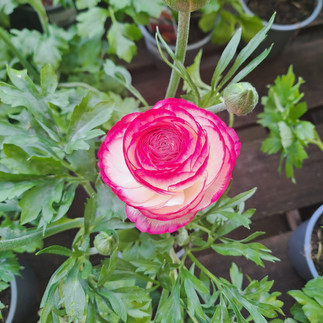

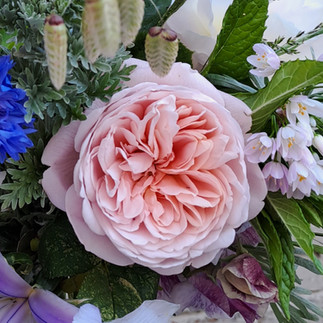
















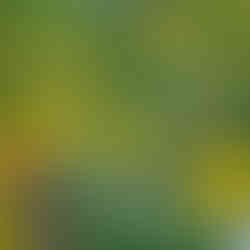














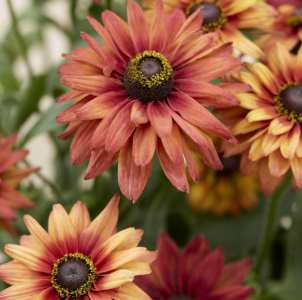
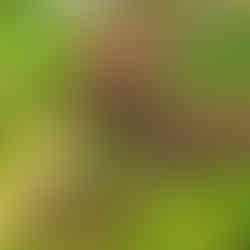






















Comments